New Game Odoku
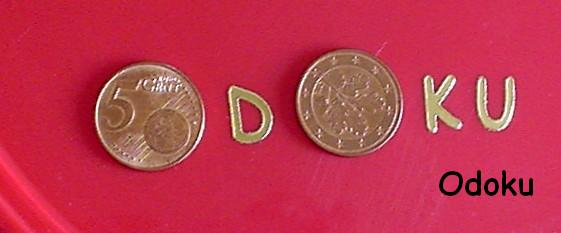
Odoku is an abstract game with simple rules for two players, invented by
Ingo Althofer in July 2011. The two players are named B
(like Balancer) and A (like Anti-Balancer).
The second part of its name O-doku shall indicate that the game
is somewhat related to Sudoku.
The board is quadratic with 5 x 5 squares.
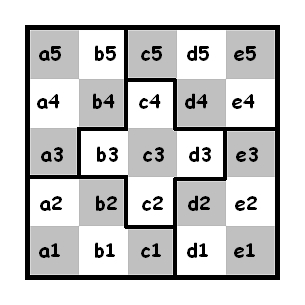
As seen in the diagram, it is divided in five groups:
one central cross and four outer groups (North-East, South-East,
South-West, North-West). There are, in analogy to Sudoku, five plus
five more groups: one for each row, and one for each column. So,
altogether Odoku has 15 groups.
There are pieces in two colours: about 25 white ones and
25 blue pieces. A game consists of 25 moves. In the beginning
the board is empty.
In each move one square of the board is filled.
A and B move in random order. Before each move a coin is flipped.
The outcome decides who is to make the next move.
The player to move has the choice to put either a white or a blue
piece on a free square of the board.
When all squares of the board are filled (after 25 moves), for
each group it is determined whether it is balanced or unbalanced.
A group is balanced when it contains two or three blue
pieces (and three or two white pieces, correspondingly). When the
blue-white relation is 5-0 or 4-1 or 1-4 or 0-5, this group
is unbalanced.
Player B, the balancer, wants to maximize the number of balanced
groups in the final position. Player A has just the opposite intention.
Here is a sample game. Coordinates are used like in the diagram above.
In the notation white pieces are represented by "O",
and blue pieces by "X".
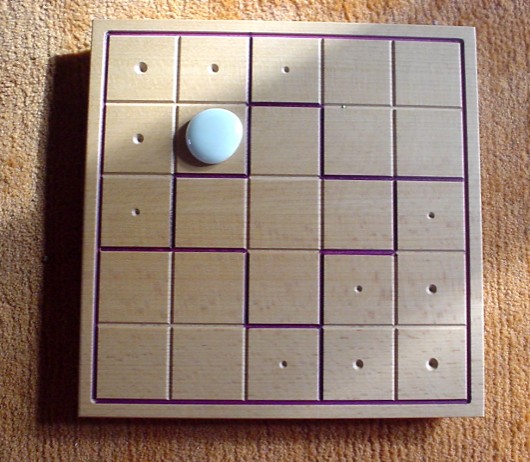
Position after 1. Anti Ob4
2. Balancer Xb3
3. Balancer Xd4
4. Anti Xd3
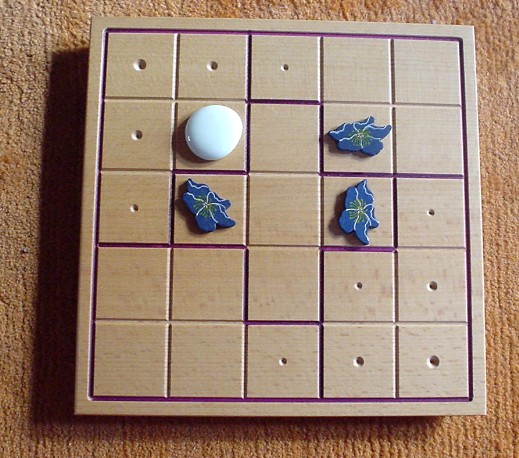
After 4. Anti Xd3
5. Balancer Oc3
6. Anti Xd5
7. Balancer Od2
8. Anti Xd1
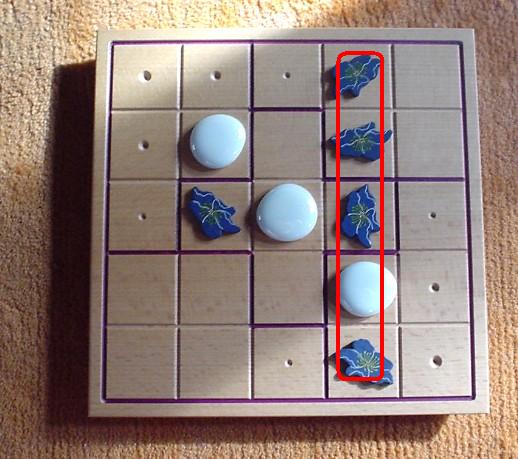
After 8. Anti Xd1
Now Column d is unbalanced.
9. Anti Xe5 Od2
10. Balancer Oe4
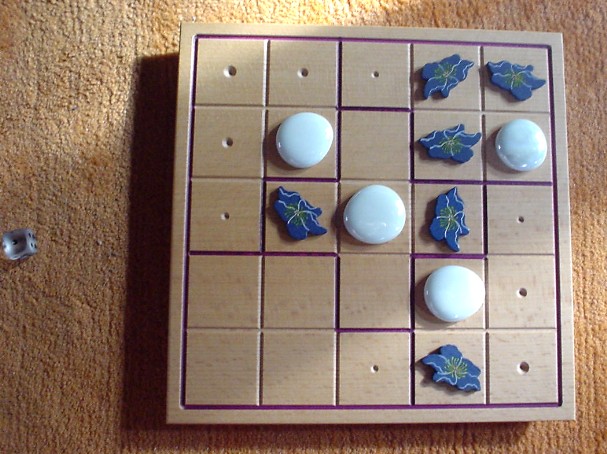
After 10. Balancer Oe4
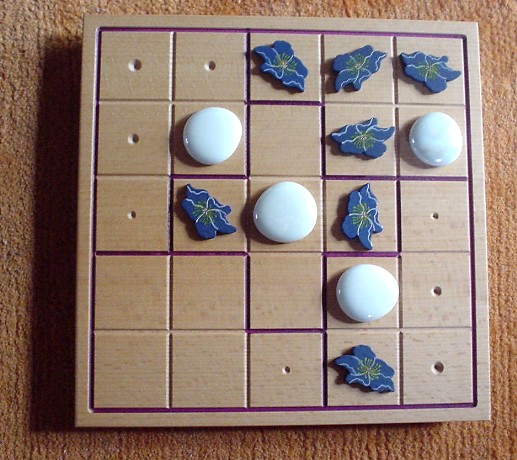
After 11. Anti Xc5
Now the North-East corner is unbalanced.
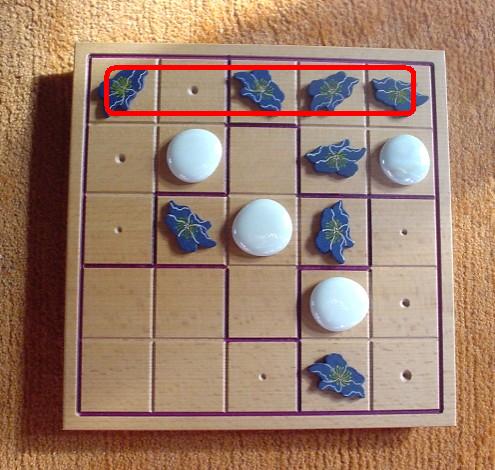
After 12. Anti Xa5
Now Row 5 is unbalanced for sure, although it is not completely filled, yet.
13. Balancer Ob5
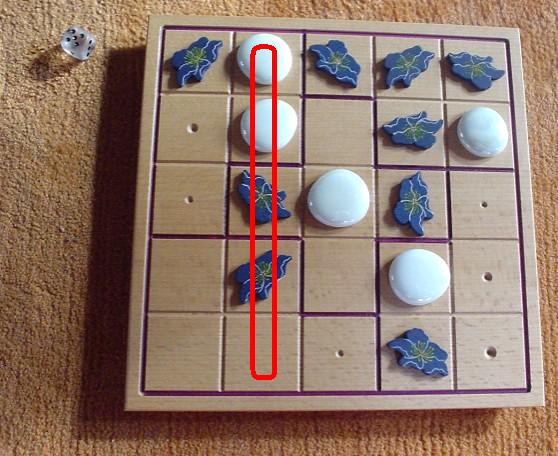
After 14. Balancer Xb2
Now Column b is balanced for sure, although it is not completey filled, yet.
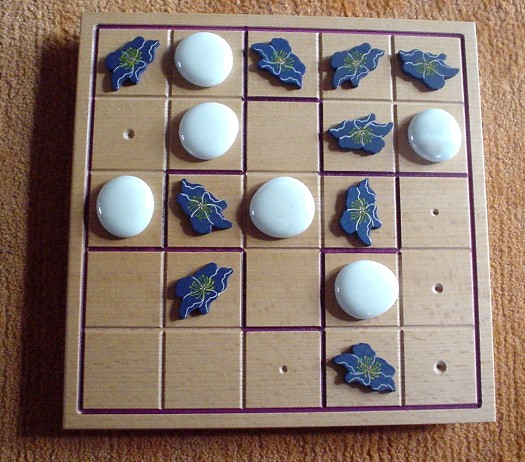
After 15. Balancer Oa3
Now Row 3 is balanced for sure.
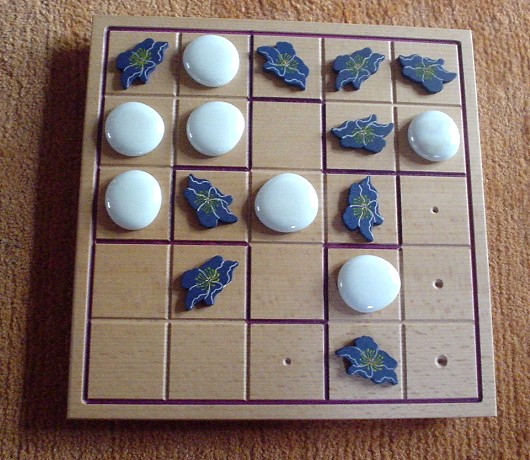
After 16. Anti Oa4
Now the North-West corner is unbalanced.
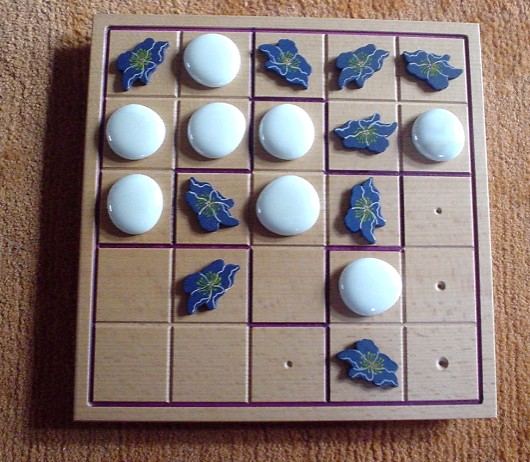
After 17. Anti Oc4
Now Row 4 is unbalanced and the central cross is balanced.
18. Balancer Ob1
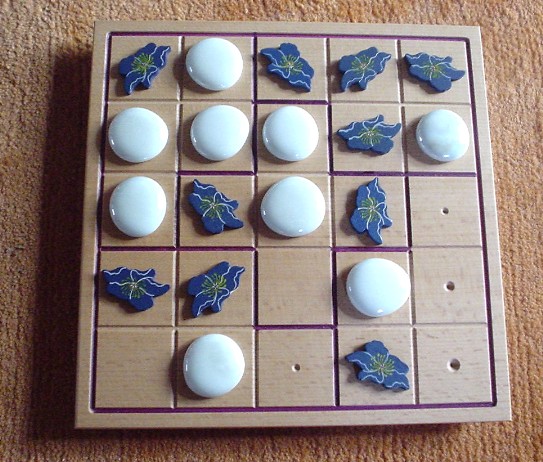
After 19. Balancer Xa2
Now Column a is balanced for sure.
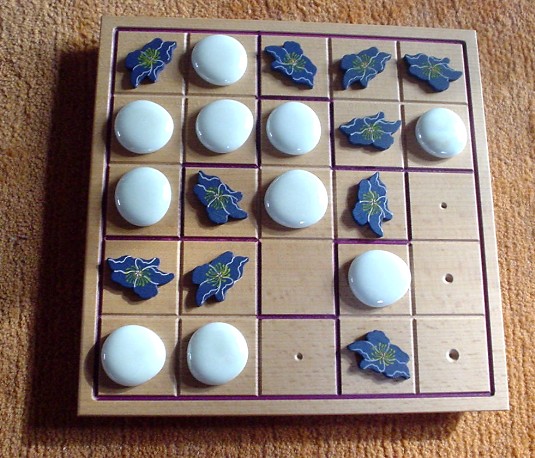
After 20. Balancer Oa1
Now the South-West corner is balanced for sure.
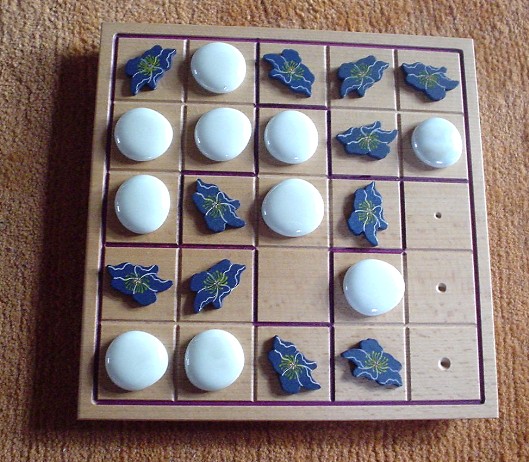
After 21. Balancer Xc1
Now Row 1 and Column c are balanced for sure.
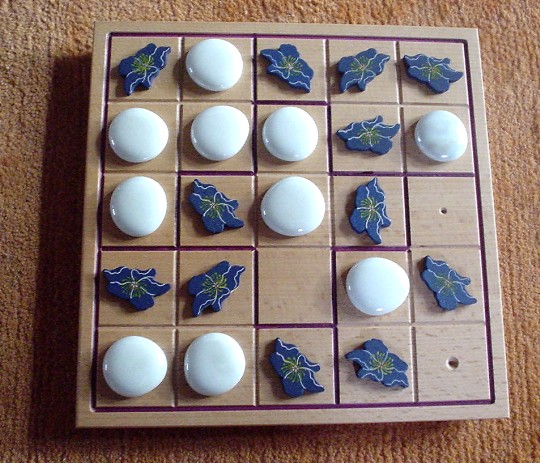
After 22. Anti Xe2
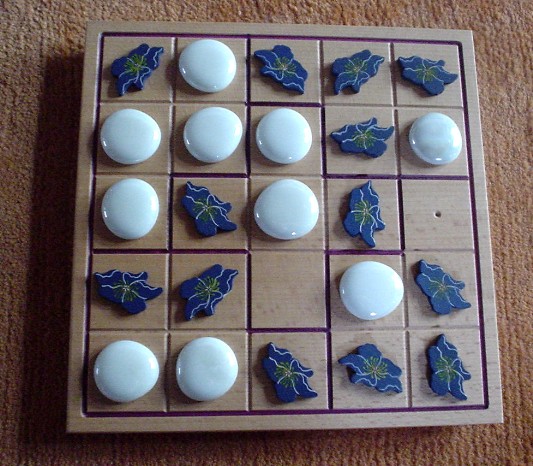
After 23. Anti Xe1
No "new" groups have been decided by moves 22 and 23.
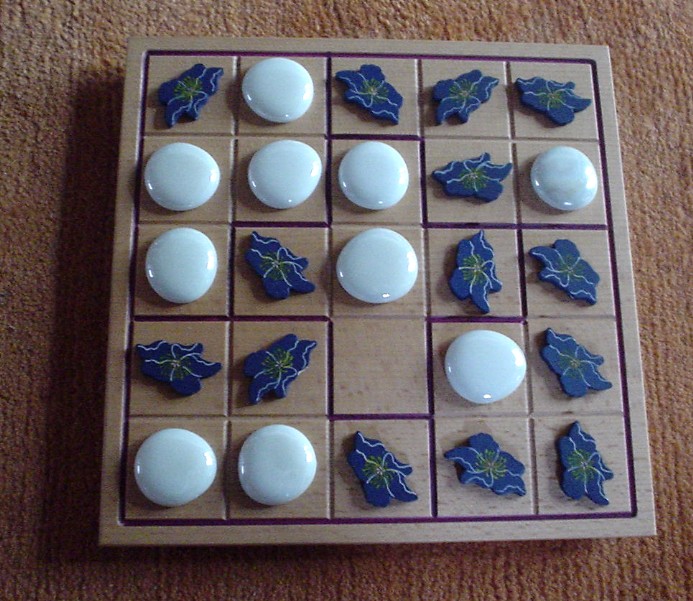
After 24. Anti Xe3
This move makes Column e and the South-East corner unbalanced.
Now all 15 groups are decided. The final move is meaningless.
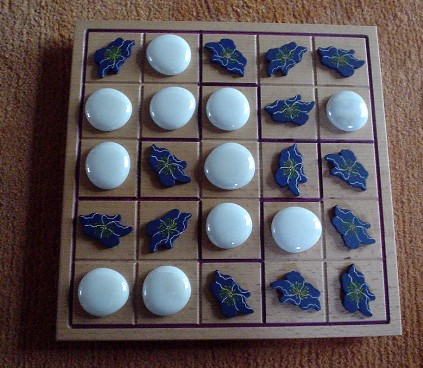
Final position after 25. Balancer Oc2
The final counting is best done in two steps. First the rows and
columns are evaluated. Balanced groups are marked by a sign (here a
blue piece) at the corresponding border. Unbalanced groups remain
unmarked.
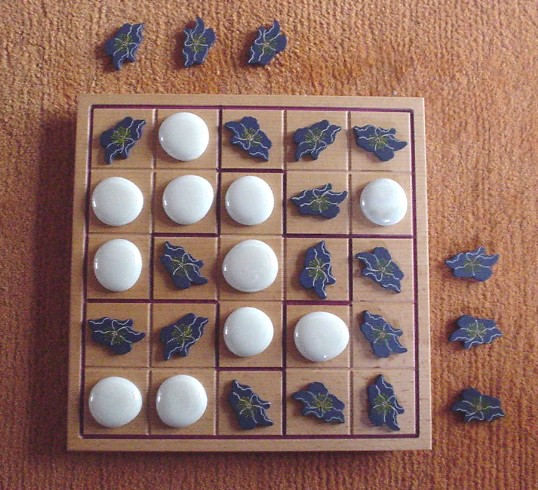
Three rows and three columns are balanced.
Now the central cross and the four corner groups are evaluated.
Simply delete the pieces and leave a blue piece in each of these groups
that is balanced.
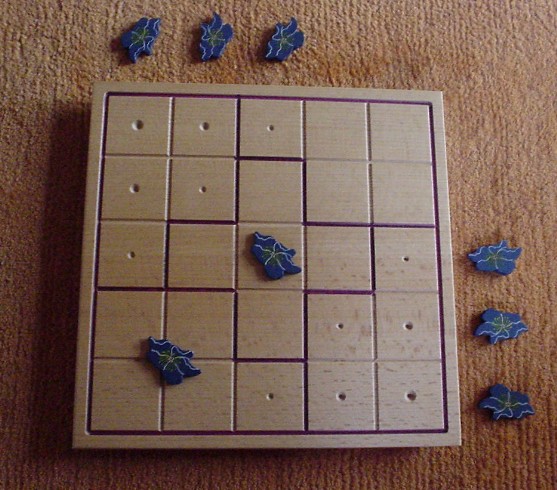
Two more groups are balanced, so in total the score is 8
for the Balancer. For the Anti-Balancer this is a very good result,
as he had made only 12 moves.

Feel free to build your own Odoku set. Odoku is also well suited
as a game for paper and pencil.
Back to the main site of Ingo Althofer




















